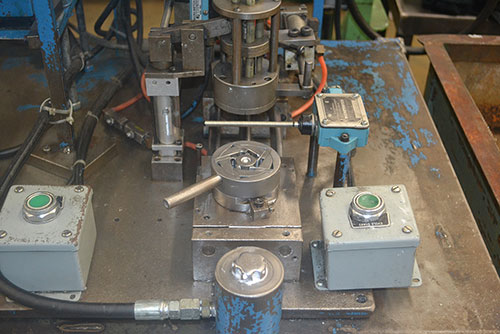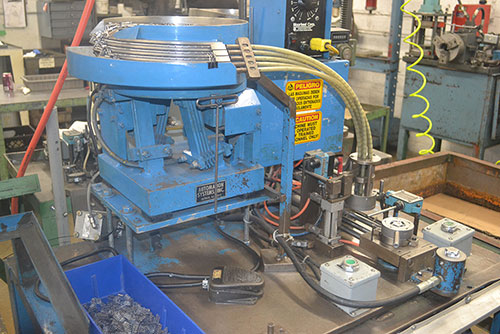INCOMING MATERIAL CONTROL
Material delivered to the receiving department will be inspected by material handling personnel for accurate count/weight and any obvious shipping damage. Material ready for Quality Control inspection will be able to be identified by the absence of a Quality Control tag. All material will be subject to lot inspection to the appropriate quality level as established by the purchasing department with approval of the Quality Control and Engineering Manager.
Approved material will be tagged with a blue tag, and will be marked with the date, part number, count, and routing (stock or production dept.) as required. The Quality Control inspector will initial all tags. No stock will be accepted in the warehouse without this tag. No stock may be used for production without this tag. It will be the responsibility of the department foreman to ensure that all material used for production in his/her department has been approved with a blue tag.
Material that is questionable will be given a yellow tag with the reasons or questions noted, and then removed to the quarantine area for deposition.
Material that is rejected outright will be given a red tag with all pertinent information as described above, and will be removed to the quarantine area for subsequent return to the supplier.

DEFECTIVE MATERIAL CONTROL
Material found to be defective or substandard will be identified with a Defective Material Report (DMR) by a member of the Quality Control Department. The DMR will contain the part number, name, description of the defect, and sample size and number of defects found if applicable. The Quality Control member will initial the DMR and attach it to the defective material. He/she will also ensure that the defective material is removed to the quarantine area.
A copy of the DMR will be sent to the Quality Control Manager who will promptly notify the supplier in the case of purchased parts, or notify the responsible department in the case of in house produced parts. Immediate corrective action will be undertaken and a further sampling of stock, work in process, and finished goods will be done to determine the extent of the problem. If additional defective material is found, it will be tagged with the DMR and handled in the same manner described above.
A Material Review Board will be established that consists of representatives of the Quality Control Department, production department, purchasing department, engineering department, and top management. The Material Review Board will meet on a timely basis to determine the deposition of defective material, including sorting, reworking, returning to the supplier, or scrapping. If the supplier is found to be at fault, a copy of the DMR will be placed in the vendor file maintained in the purchasing department and will be a factor on determining future orders.
The Material Review Board will be responsible for following up on corrective action with suppliers as well as internally produced parts and assemblies to ensure that the corrective action is effective.
PROCESS MATERIAL CONTROL
Prior to the start of a production run of either component parts or finished assemblies, a “first off” sample is inspected for all characteristics listed on the inspection instruction sheet. The part is also visually compared to the tagged “master sample” for all non-measurable attributes. It is then tagged with the part number, data, and inspectors initials for future reference.
As stated in the policy section of the manual, it is the belief of Standard Starter Drive management that primary responsibility for quality rests with the manufacturing and assembly departments. It is our firm belief that quality cannot be inspected into a part. Rather it must be built into the part, which puts the basic responsibility on the individual machine operator or assembler. This also emphasizes the prevention of defects and control of costs at the earliest possible segment of the production cycle.
During production, samples are evaluated on regular basis using the inspection instruction sheet. The results are then recorded for future reference. In some cases, deemed necessary by the Quality Control manager, statistical process control charts will be used to detect undesirable trends (primarily in the assembly department). In any event, no components or assemblies are moved to the next operation until all inspections and tests are completed and approved.


